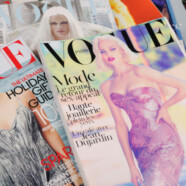
In this special report, the VineOracle (IPStell’s personal pundit on all things IP) brings news (and her own brand of predictions) for the aesthetically minded visitor. And it is a star-studded cast of high-flyers (and fast swimmers) from Paris and New York representing some of the most exclusive brands. But do not be fooled by the A-list members on call, from what the VineOracle hears, these celebrities are prone to IP rights violations aplenty. Read on:
Michael Phelps caught double dipping on the IOC’s bill
The greatest Olympian in history retired from professional swimming at the close of the London 2012 Summer Games with an impressive 22 medals, but not before (unwittingly) kicking up a tremendous storm. Midway through the Olympic games two pictures were leaked to the online press showing Mr Phelps taking a bath in his swimming trunks and having tea with Russian gymnast Larisa Latynina (the former record holder for the greatest number of Olympic medals).
However, these were not Phelps’ holiday snaps but pictures by the famous photographer Annie Leibovitz and intended to be part of Louis Vuitton’s latest advertising campaign – or so many inferred from the strategically placed Vuitton products. Unfortunately, these pictures appeared online on the second Tuesday of the Olympic games, in violation of rule 40 of the Olympic Charter.
This by-law determines that:
“Except as permitted by the IOC Executive Board, no competitor […] who participates in the Olympic Games may allow his person, name, picture or sports performances to be used for advertising purposes during the Olympic Games.”
Rule 40 forms part of the volume of Ambush Marketing legislation enacted in the United Kingdom to protect the official sponsors of the event and the Olympic brand itself against opportunistic profiteering. These include the Olympic Symbol etc. (Protection) Act 1995 (OSPA) and the London Olympic Games and Paralympic Games Act 2006 (the ‘2006 Act’), both of which limits the extent to which the Olympic regalia may be used directly or indirectly. In addition, all athletes are prohibited from displaying any sponsored products (other than those of the official sponsors) during the event or at any press conference or other media appearance. However, rule 40 (formerly rule 41.3) also prohibits all celebrity endorsements by any athlete at the games for the duration of the event.
And of course Phelps did exactly that. Strangely, early reports stated that these pictures were not intended to be part of the well-known fashion house’s marketing materials and that they were not responsible for the leak. Conversely, Peter Carlisle (Phelps’ agent) reports that his client appeared in these pictures with the understanding that Vuitton’s campaign would only start on 16 August, after the IOC’s ban on celebrity endorsement ended, as it in fact did.
Unfortunately for Phelps, a contravention of rule 40 is punishable by anything from a fine or declaration of ineligibility (irrelevant) to the stripping of medals (not so irrelevant).
As a result, Phelps went on the offensive and argued that he did not leak (or sanction such leak) of the pictures and is therefore not guilty of contravening rule 40. In fact this was not the first time Phelps fell victim to rogue photographs, as his bong-smoking picture (published by News of the World) proves emphatically.
However, it seems that somehow the law got lost in this haze. According to Carlisle (as reported by Fox Sports) ”all that matters is whether the athlete permitted that use. That’s all he can control. In this case, Michael did not authorize that use.” Unfortunately for Carlisle and Phelps, there is an Olympic-sized swimming pool divide between permitting the creation of photographs and authorizing the use of photographs.
The question is not whether Phelps permitted the use of the pictures. It is whether Phelps permitted the use of his person. And it would be really difficult to argue that Vuitton’s pictures were taken without Phelps’ permission.
Of course this is a strict interpretation of rule 40, but clearly within bounds of the provision. Unless Phelps can establish that he expressly forbid the distribution of these pictures during the ban-period (which he clearly cannot do), his actions may legitimately be construed as consent by conduct for the use of these pictures by Vuitton. The VineOracle sincerely doubts whether Phelps would ever have taken the plunge for Vuitton without his endorsement cheque safely deposited. Appearing in an advertisement is complete the moment an appearance is made – not the moment a picture is lawfully used as an advertisement. The fact that Vuitton did not publish the pictures does not mean that the pictures did not serve to advertise their product.
However dubiously this came about, Vuitton’s pictures managed to garner the widest possible distribution during the Olympic games at precisely the time when the world’s attention was focused on Phelps’ performance – and all this without a single cent to the IOC. One would be hard pressed to imagine a more obvious example of ambush marketing.
Early headlines in this matter proclaimed, “Michael Phelps strips down for Louis Vuitton”. It seems that Phelps would be fortunate if the IOC does not strip him of more.
Boots and all for Louboutin and the red suede shoes
Ladies of distinction everywhere would immediately recognise the distinctive red-soled shoes as the product of French shoemaker Christian Louboutin. His range of iconic footwear is globally recognized as much for its “China Red” soles as for its dangerously high heels. And yet, many are willing to abandon all reason in an attempt to reach the celestial heights of fashion and extravagance.
It is therefore not surprising that Louboutin refused to be tripped up by fashion giant Yves Saint Laurent and took issue with Laurent’s proposed line of monochrome footwear. The proposed Laurent line was to include a pair of all-red shoes (including the sole) that, according to Louboutin, constituted an infringement of the Louboutin red-sole trademark.
Earlier this month the US Second Circuit Court of Appeals delivered judgment in this case and at the close of proceedings Louboutin was standing tall. However, in true American fashion the court saw fit to create a new word for an existing legal concept and delivered a “cut-out” judgment which allowed Laurent to still produce and sell its all-red shoes.
According to Judge José Cabranes’ lengthy judgment, the combination of an all red lacquered sole and a shoe (of a different colour or combination of colours) has become distinctive of the Louboutin brand as is therefore protectable as an indication of origin. As a result, Lourent (and of course all other shoemakers) are prohibited from producing a red-soled shoe.
However, the “cut-out” (or exception, limitation or reservation) in this case is, by implication, the use of a red-sole in combination with an all-red shoe. According to the judgment, Louboutin’s trademark is only represented in the colour combination of a red sole and a non-red upper shoe. Consequently, the judgment did not find that Lourent’s all-red product infringed the trademark of Louboutin and is therefore free to continue production.
According to surveys submitted as evidence in the matter, most consumers recognized Louboutin’s shoes by its red sole, as opposed to its general colourisation. It is therefore irrelevant that Louboutin relied on a single colour (in stead of a collection of colours) as the basis for its trademark suit – the distinctive characteristic of the brand was contained in the contrast between the consistently red sole and the rest of the non-red shoe. Consequently the court ordered the US Patent and Trademark Office to limit the registration of Louboutin’s colour trademark to cases where the red sole is used in contrast to the rest of the shoe.
However, while this judgment is successful in walking the fine line between fair use and trademark use, all has not welcomed it.
Particularly the judge in the court a quo (New York District), who dismissed Louboutin’s case because a finding in its favour would “cast a red cloud over the whole industry, cramping what other designers could do while allowing Louboutin to paint with a full palette.”
Fortunately, “cramping” the style of others is precisely what trademark law is supposed to do. It protects the brand value, goodwill and reputation of the manufacturer by preventing others from producing ersatz products, Chinese copies or similar goods under the same or similar trademark.
Of course, in isolation, it is impossible to draw a line in the sand between infringing and non-infringing trademark use. For this reason, the outcome of trademark litigation is particularly difficult to predict and largely circumstantial. Especially considering the fact that the Trade Marks Act protects all registered marks against exploitation by the same or similar mark in relation to the same of similar goods or services. It is therefore no wonder that sometimes a judge commits a (legal) faux pas.
Gladly, Judge Cabranes is cutting a fine figure today and his decision marks a small (yet valuable) victory for trademark proprietors against the ever-encroaching free-use pariahs.
Cobus Jooste




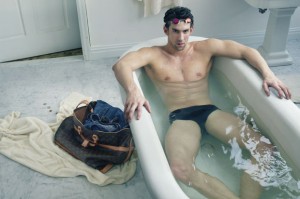
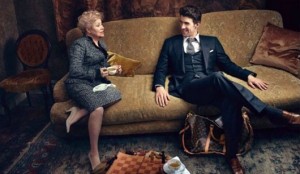
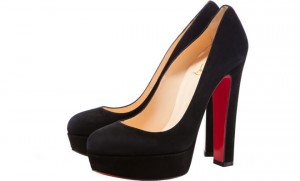
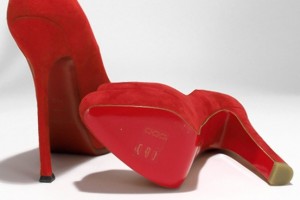
 Follow
Follow
